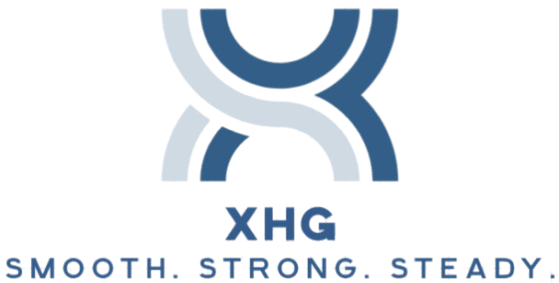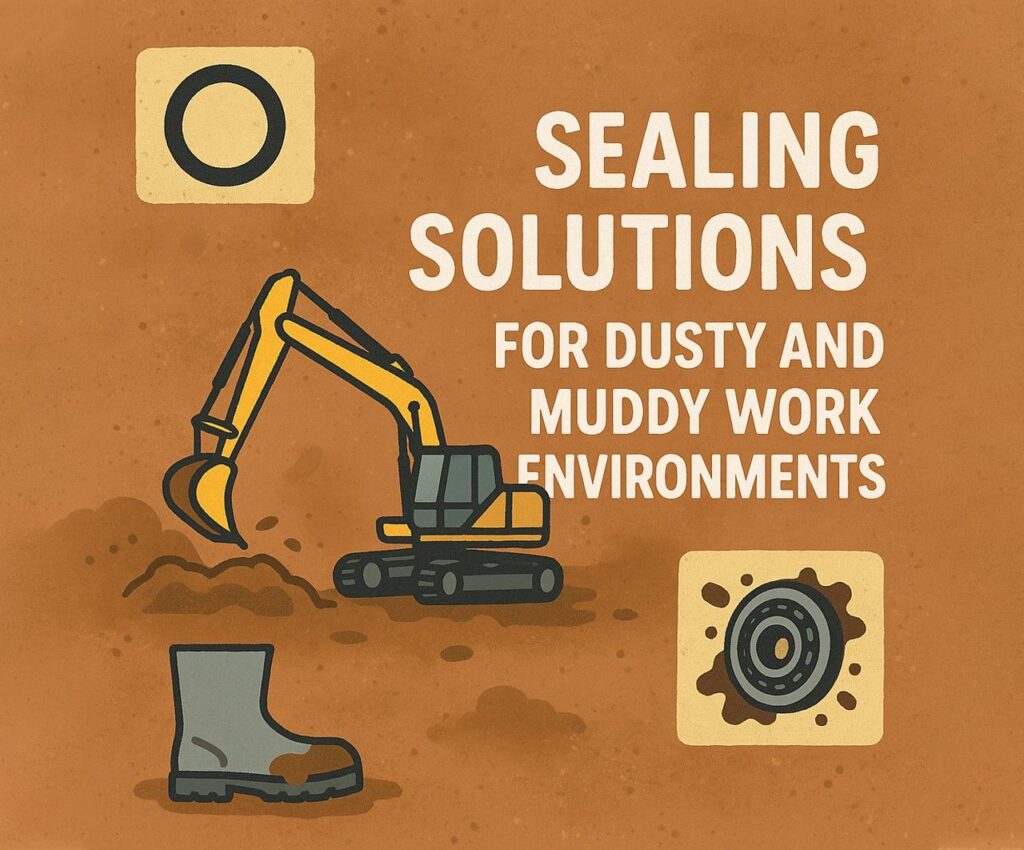In harsh environments where dust, mud, grit, and water are constant threats, component protection isn’t just important—it’s essential. For heavy equipment like excavators, cranes, and drilling rigs, proper sealing around a slewing ring bearing, bearing slewing, or bearing slewing ring can make the difference between continuous uptime and costly downtime. These large rotational bearings perform critical functions, often under extreme conditions, and they rely heavily on the right sealing solutions to survive and thrive.
Let’s explore how sealing technology is evolving to meet the demands of dirty environments—and why it’s becoming a key focus for design engineers and maintenance teams alike. Know More
The Role of Seals in Slewing Bearings
A slewing ring bearing typically consists of an inner and outer race, rolling elements (like balls or rollers), integrated gear teeth, and sealing solutions to protect against contaminants. These bearings allow slow, smooth rotation under heavy loads and are used in everything from wind turbines to mining shovels.
In real-world field use, the main enemy of the bearing slewing ring isn’t the load—it’s the contamination. Dust, mud, water, and abrasive particles enter the bearing cavity and wreak havoc, accelerating wear, degrading lubricant, and eventually causing failure.
Seals form the first line of defense. A well-designed seal system on a bearing slewing unit blocks contaminants, retains grease, and helps stabilize internal pressure—all of which contribute to longer life and more reliable performance.
Common Contaminants and Their Effects
In dirty or wet environments, especially construction, agriculture, forestry, and mining, slewing ring bearing failure is often caused not by mechanical stress, but by contamination. Here’s what gets in—and what it does:
- Dust: Acts as an abrasive, scouring metal surfaces and accelerating wear.
- Mud: Combines moisture and particles, spreading contamination deeper into the bearing.
- Sand: Particularly destructive in desert or beach applications.
- Water: Washes away lubricant and promotes corrosion inside the bearing slewing ring.
- Grease-diluting chemicals: Found in washdowns or hydraulic fluid leaks.
Over time, even small gaps in sealing systems can lead to massive degradation.
Types of Seals Used in Slewing Bearings
Modern bearing slewing solutions offer a variety of seal types, depending on the environment, space, and load considerations.
1. Lip Seals
Lip seals are among the most common for a slewing ring bearing. Made from nitrile or Viton rubber, they flex to form a tight contact against the rotating surface.
- Best For: General industrial use, moderate contamination.
- Limitations: May wear out quickly in extremely abrasive conditions.
2. Metal Face Seals (Duo-Cone Seals)
Used in high-contamination zones, these are heavy-duty seals with two precision-ground metal faces that rotate against each other, protected by elastomer rings.
- Best For: Mining, construction, and off-road environments.
- Benefits: Exceptional mud, sand, and dust exclusion.
3. Labyrinth Seals
These non-contact seals create a maze-like path for contaminants, making it difficult for debris to reach the internal bearing.
- Best For: High-speed, lower-load applications.
- Limitations: Less effective at grease retention in low-speed, high-torque bearing slewing ring use.
4. Custom Molded Seals
In custom machinery or OEM-specific builds, seals are molded to match unique geometries of the slewing ring bearing housing and rotating interfaces.
- Benefit: Perfect fit, optimized performance.
- Drawback: Higher cost, longer lead time.
Key Features of an Effective Seal System
To protect your bearing slewing unit in challenging environments, seals must do more than just fit. They must:
- Maintain constant contact across the full rotational cycle.
- Resist temperature extremes and chemical exposure.
- Withstand high-pressure washdowns in food/agriculture applications.
- Stay flexible during thermal expansion and contraction.
- Last as long as the bearing or be easily replaceable.
The best seal systems are engineered specifically for the operating environment—not chosen from a catalog as an afterthought.
Maintenance Matters: Checking Your Seals
Even the most advanced seal can’t do its job if it’s neglected. A preventive maintenance schedule is key for keeping your bearing slewing ring healthy in the long term.
Inspection Tips:
- Look for grease leakage—a common sign of seal failure.
- Check for visible debris around the seal area.
- Monitor operating temperature—contamination increases friction and heat.
- Replace seals before bearing damage occurs, not after.
In mobile equipment, seal inspection should be part of every routine walkaround. For stationary systems, use vibration or thermal analysis to catch problems early.
Innovations in Seal Technology
Top manufacturers are now integrating smart materials and smart designs to improve sealing performance for bearing slewing applications.
1. Self-lubricating Seals
These reduce maintenance by embedding lubrication into the seal material itself—perfect for hard-to-access slewing ring bearing locations.
2. Sensor-Integrated Seals
Some seals now include micro-sensors to monitor wear, pressure, or contamination, sending alerts before failure occurs.
3. Hybrid Seal Materials
Combining elastomers with PTFE or thermoplastics enhances flexibility and wear resistance under heavy-duty loads.
4. 3D-Printed Seal Prototypes
OEMs are using rapid prototyping to quickly test and refine seal designs for custom bearing slewing ring assemblies—cutting development time and improving performance.
OEM vs Aftermarket: Choosing the Right Sealing Partner
Not all seals are created equal. Choosing seals from reputable slewing ring bearing manufacturers ensures the seal profile and material are engineered specifically for the application.
Questions to Ask When Selecting Seals:
- Is the seal rated for your operating temperature range?
- Can it withstand your expected contamination levels?
- Will it retain lubricant under your specific speed and load conditions?
- Is replacement possible without disassembling the full bearing slewing ring?
Working with suppliers who understand both the sealing and bearing systems as an integrated unit yields better long-term results.
Real-World Example: Sealing in Agriculture
In agricultural machinery—such as sprayers, tillers, and harvesters—mud and dust are ever-present. Here, bearing slewing assemblies must handle heavy loads, continuous rotation, and near-constant exposure to grit.
Manufacturers now use dual-lip or labyrinth hybrid seals designed to block fine particles while preventing water ingress during cleaning. Combined with high-viscosity grease and proper shielding, this creates a robust sealing system that extends bearing life by 2–3x over unsealed setups.
Conclusion: Don’t Let Dirt Destroy Your Bearings
The harshest work environments test every system component—especially seals. Protecting your slewing ring bearing, bearing slewing, or bearing slewing ring from contamination is essential for long-term performance, machine reliability, and cost control.
Whether you’re designing new equipment or upgrading old, investing in the right sealing solution pays off with fewer failures, longer service intervals, and greater customer satisfaction.

